Looking for iconic landmarks in the UK that blend epic history, rugged beauty, and legendary castles? Wales is packed with unforgettable places where you can explore, discover, and relive centuries of stories.
As a traveler or history lover, you deserve more than tourist traps — you want to stand inside ancient walls, cross record-breaking aqueducts, and soak up views from world-famous towers. But with so many sites across the UK, where do you begin?
At Landmarks Architects, we know the heart of a place is in its landmarks. That’s why we’ve gathered the top Welsh landmarks you need to see — from mighty castles to modern wonders.
In this article, you’ll discover:
- The top 3 most famous Welsh landmarks you simply can’t miss
- Historic castles and engineering feats that shaped Wales
- Modern cultural hubs and natural wonders you’ll want to explore
Ready to experience Wales at its best? Keep reading and start planning your trip through these legendary sites.
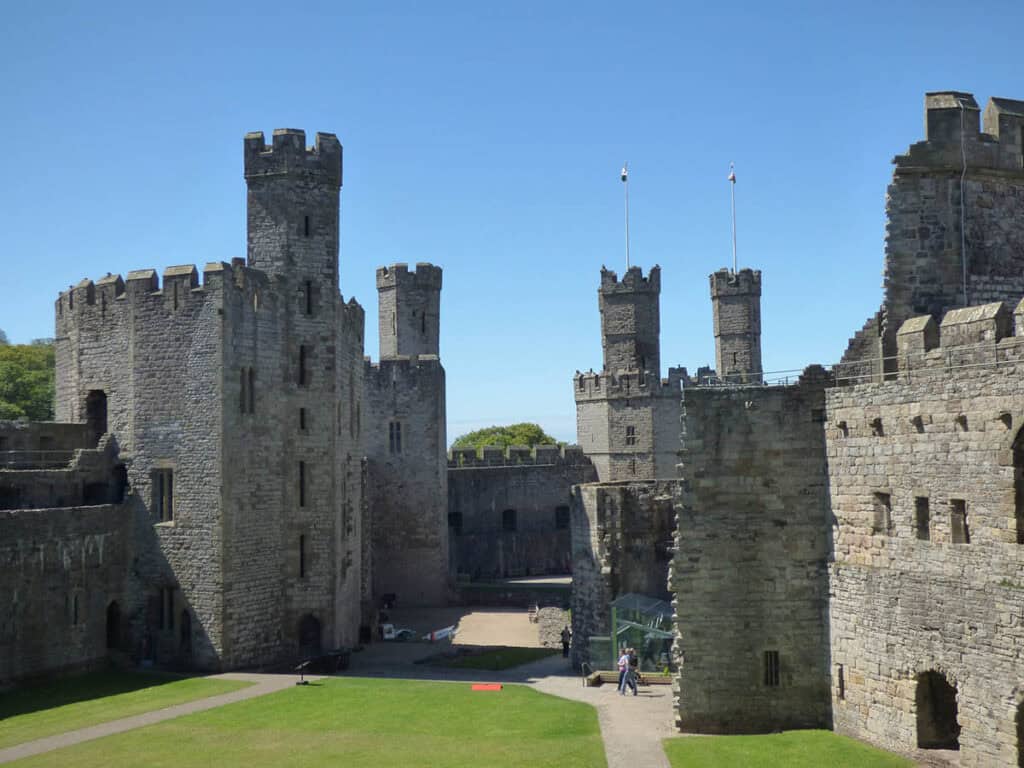
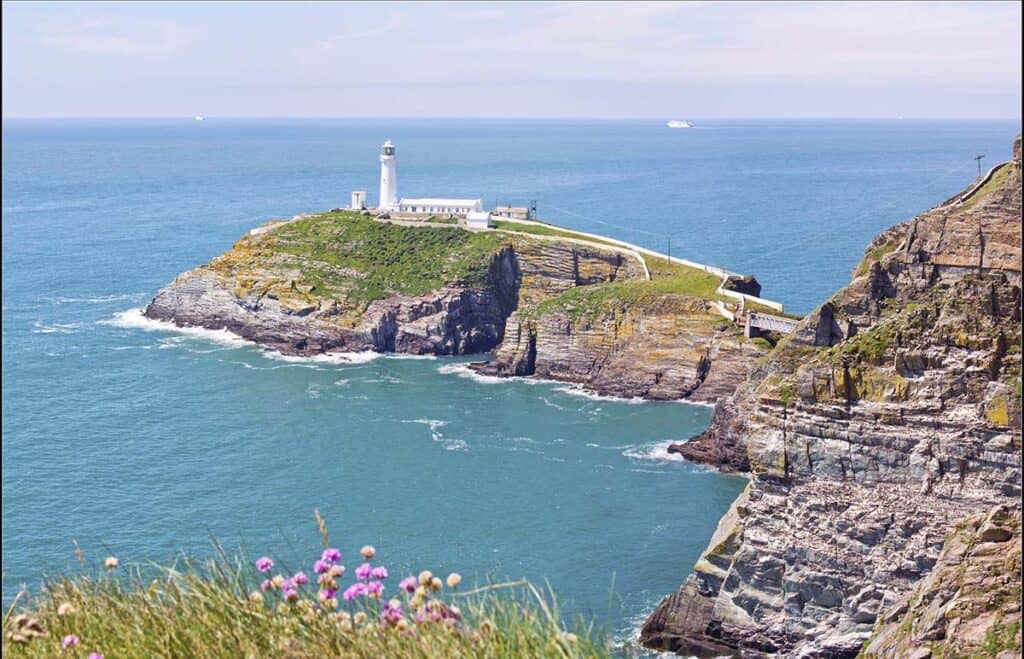
Top 3 Most Famous Welsh Landmarks
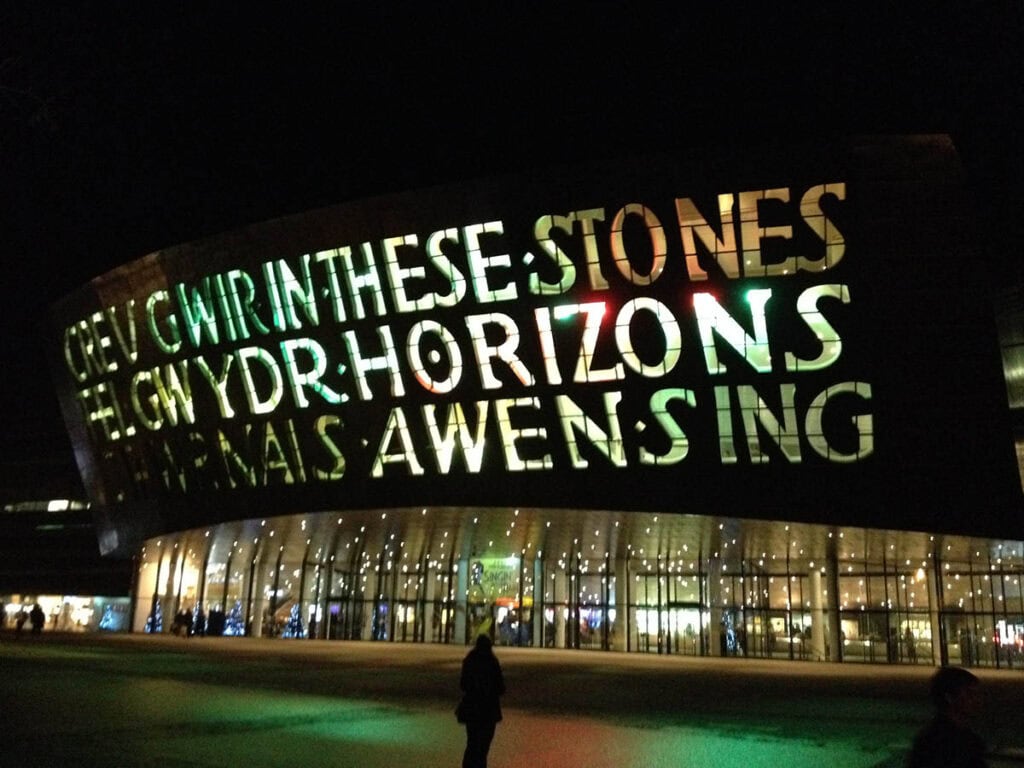
Wales is home to many famous Welsh landmarks. These places show its rich history and cultural pride. You can find famous landmarks in Welsh towns and cities. They are located in both North Wales and South Wales.
Welsh landmarks include ancient castles and breathtaking World Heritage Sites. These sites reflect Welsh culture, strong design, and national pride. They are part of the most iconic landmarks in Wales.
1. Caernarfon Castle
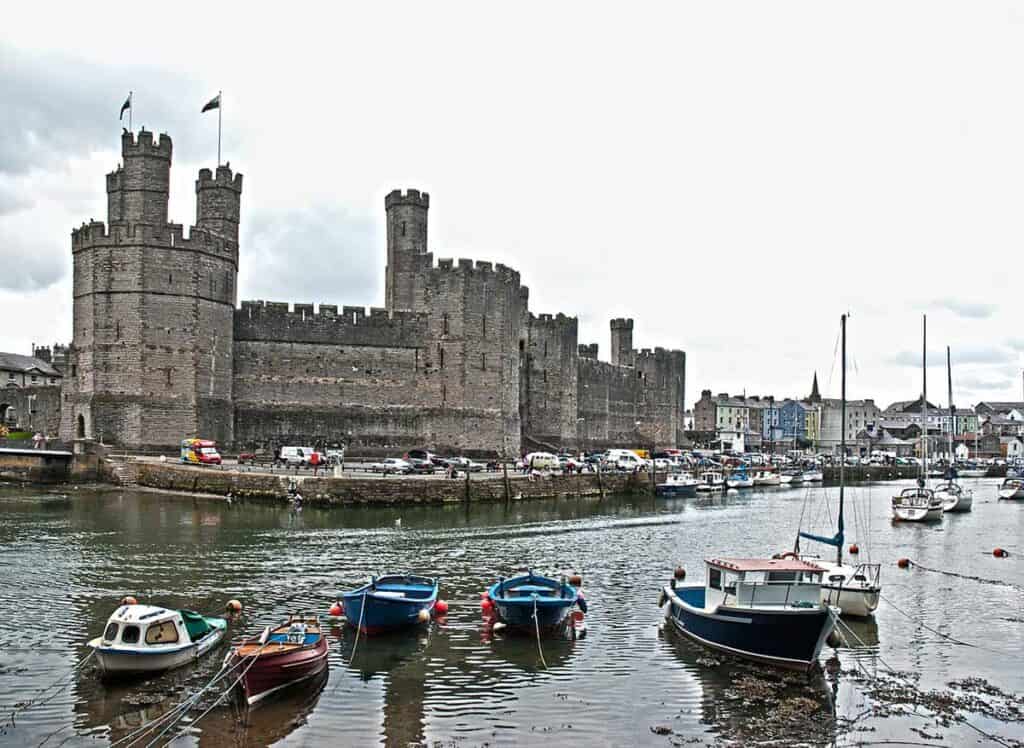
Caernarfon Castle is one of the largest castles in Wales. It is in North Wales near the bank of the River Seiont. Built from local stone, it dates back to the late 13th century. King Edward I ordered its construction. The goal was to control Welsh land. The castle is an important part of Welsh history.
This famous site is one of the top Welsh landmarks. It is a UNESCO World Heritage Site. The castle is known for its size and strong design. It has tall walls, many towers, and a special shape. Its polygonal layout stands out. Visitors see it as one of the most famous landmarks in Welsh heritage. It shows English power in medieval Wales.
2. Pontcysyllte Aqueduct

The Pontcysyllte Aqueduct is in North Wales. It is an outstanding feat of engineering. Thomas Telford designed it. It carries the Llangollen Canal across the River Dee valley. The structure is over 307 meters long and almost 38 meters high. It offers breathtaking views of the natural beauty.
This is one of the most remarkable Welsh landmarks. It is also a UNESCO World Heritage Site. It is famous for using cast iron in a smart way. It fits well with the landscape. Walkers and boaters visit to explore Welsh history. They enjoy its link to mystical rivers and industrial progress.
3. Wales Millennium Centre
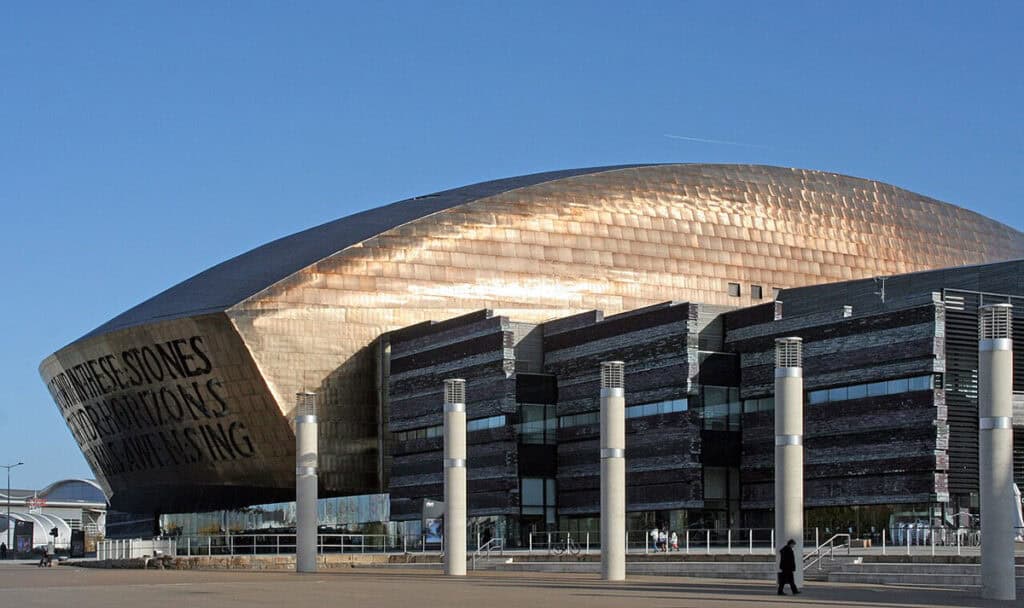
The Wales Millennium Centre is in Cardiff Bay, South Wales. It is a famous cultural landmark known for its unique design. The front is made of multi–colored Welsh slate with a bold bilingual message.
The centre hosts theatre, opera, and dance shows. It is one of the iconic Welsh landmarks and has won major awards, like the Queen’s Award for Enterprise in Sustainable Development. Arts writers praise its bold style. The building mixes Welsh heritage with modern design. Many visitors come to enjoy the arts in South Wales.
See Also Famous Irish Landmarks
Historical Welsh Landmarks

Wales is home to many castles and historic sites. They tell the story of its rich past. These famous landmarks in Welsh history showcase Welsh heritage and architecture. They also show strategic importance. Many stand in North Wales and West Wales. They overlook rivers, coasts, and mountains.
This gives a glimpse of the past. From imposing castles to serene river landscapes, these sites reflect Wales’ pivotal role in the UK’s history.
4. Conwy Castle
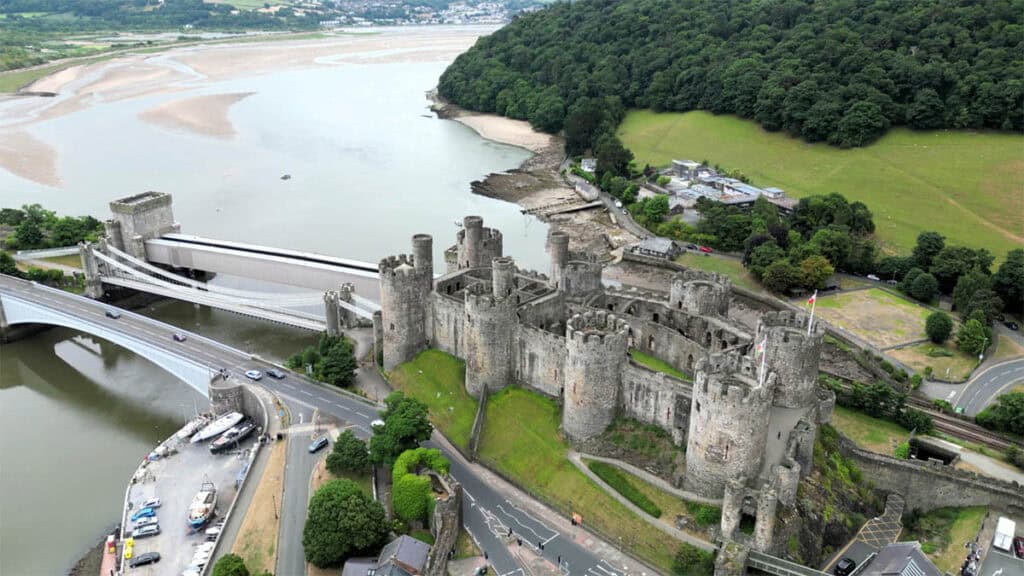
Conwy Castle is in North Wales. It was built in the late 13th century by King Edward I. This famous Welsh landmark is part of the “Castles and Town Walls of King Edward in Gwynedd” UNESCO World Heritage site. The castle was made from local stone. It sits above the River Conwy and offers strong defense and great views.
Conwy Castle has large towers and thick walls. Its layout shows medieval military design. The castle helped English control over North Wales in the Middle Ages. Visitors can walk through the well-preserved towers. They can learn about its history in the visitor center.
5. Harlech Castle
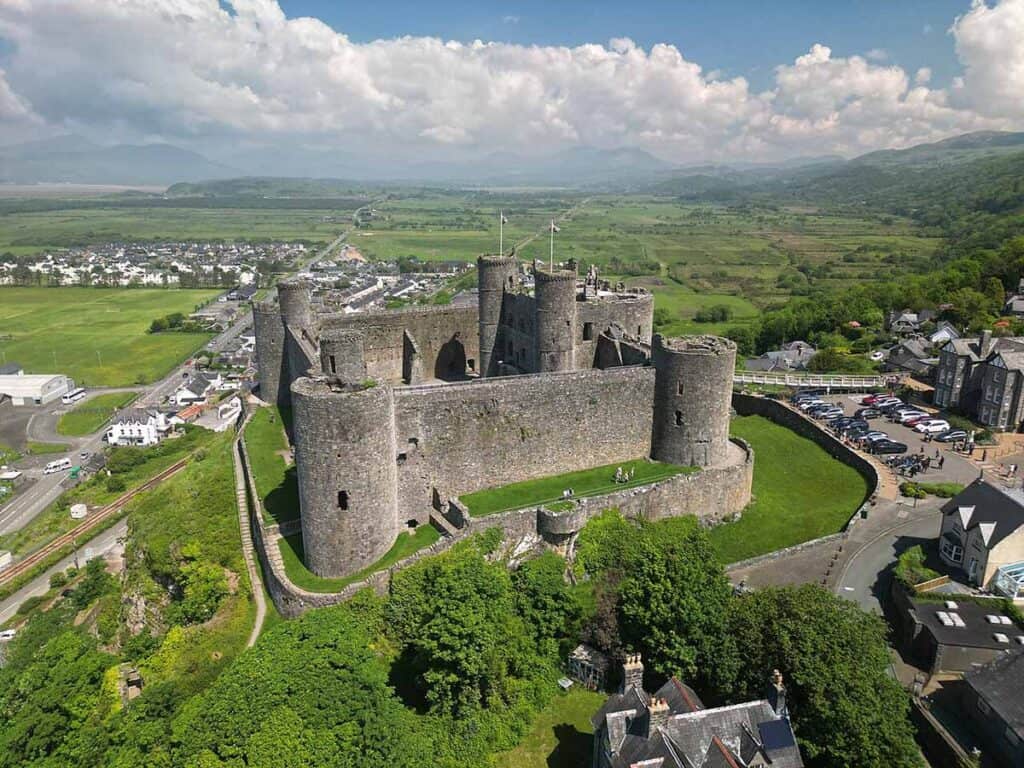
Harlech Castle is located on a rocky hill in northwest Wales, near the Irish Sea. Built by Edward I, it was part of his campaign to control Wales. The castle is famous for its steep walls and strong defense, making it hard to capture.
Harlech is part of the UNESCO World Heritage-listed castles of Edward I. It served as a military base for many years and has great historical value. As one of the key Welsh landmarks, it overlooks the sea and the surrounding landscape, controlling access to the region. The castle is a symbol of Welsh history and resilience.
6. Beaumaris Castle

Beaumaris Castle stands in the town of Beaumaris on the Isle of Anglesey in North Wales. King Edward I ordered it to help control Wales after his conquest. His main architect, James of St. George, designed it.
The castle has a perfect round layout, strong towers, and a large moat. Though the building started in 1295, it was never finished. Still, it shows the skill of medieval builders. Beaumaris Castle is part of the UNESCO World Heritage Site called the Castles and Town Walls of King Edward in Gwynedd.
This iconic Welsh landmark shows how North Wales was key to Edward I’s rule.
7. St Davids Cathedral
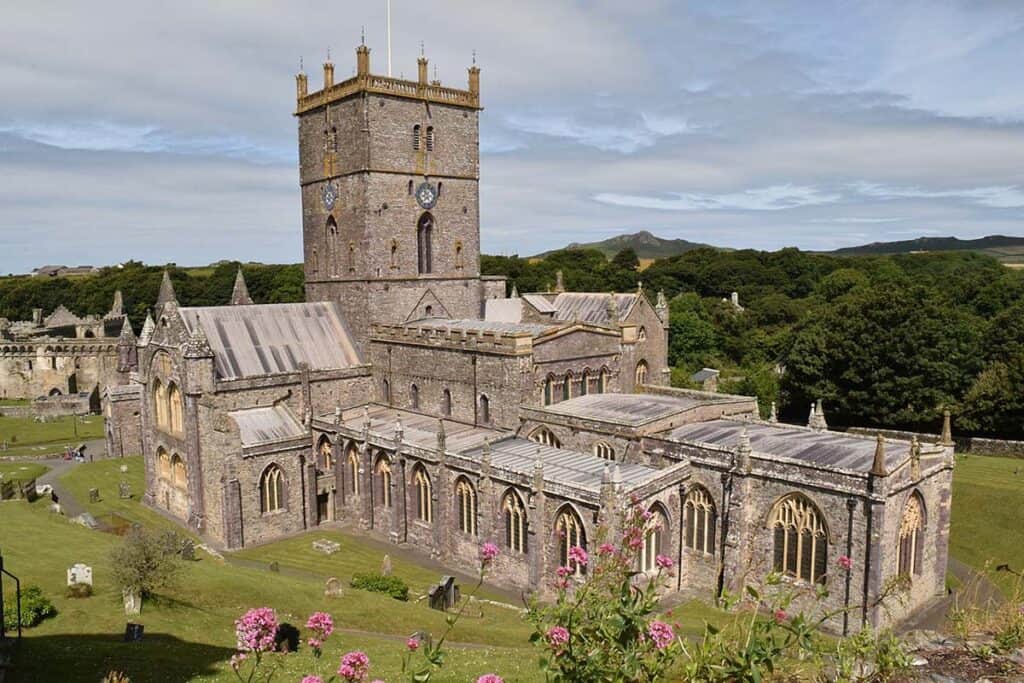
St Davids Cathedral stands in Pembrokeshire, West Wales. It was founded by St David in the 6th century. The current structure dates from the 12th century. It shows Romanesque and Gothic styles. It was a major pilgrimage site, once as holy as visiting Rome.
The tomb of Edmund Tudor, father of King Henry VII, rests inside. The cathedral faced Viking raids and Reformation challenges. It has had many restorations. Today, it is one of the most famous Welsh landmarks. It honors St David and celebrates Welsh history and culture.
8. Strata Florida Abbey
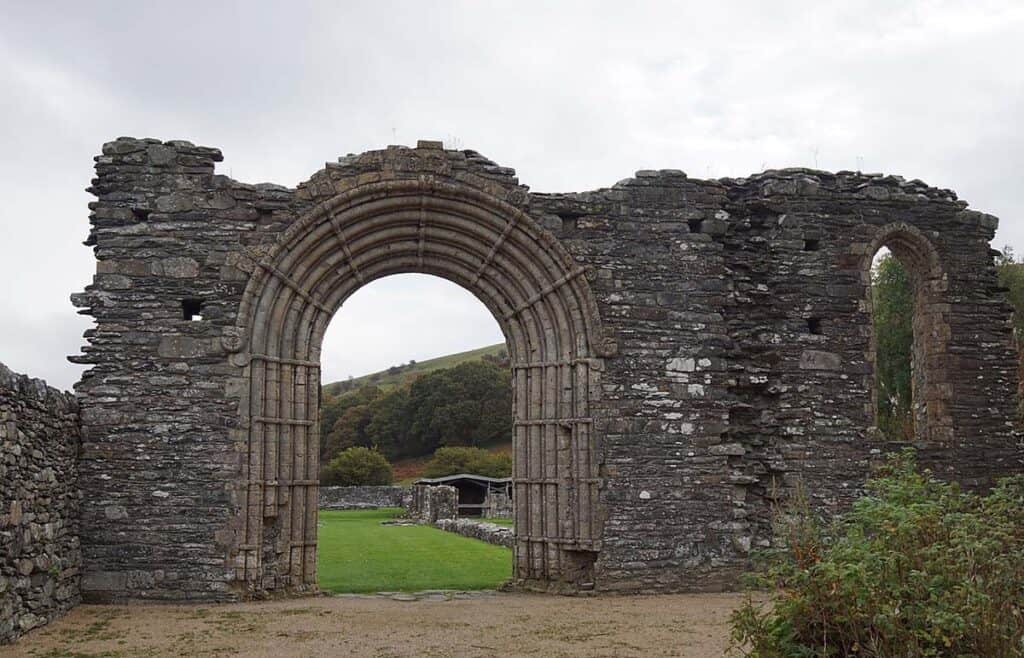
Strata Florida Abbey sits in the Cambrian Mountains of Mid Wales, near the River Teifi and thick forests. It was founded in 1164 and became a key site for Cistercian monks. The abbey stood as a strong symbol of Welsh culture and language.
Several Welsh princes from the royal house of Deheubarth are buried here. After St Davids, it was one of the most important religious sites in Wales. The monks helped save the Welsh language by copying key texts, like the Brut y Tywysogion (Chronicle of the Princes).
Today, the site is mostly ruins. Fluent Welsh language speakers once gathered here. Strata Florida Abbey stands as a testament to Wales’s rich heritage.
See Also Ancient Irish Architecture
9. South Stack Lighthouse
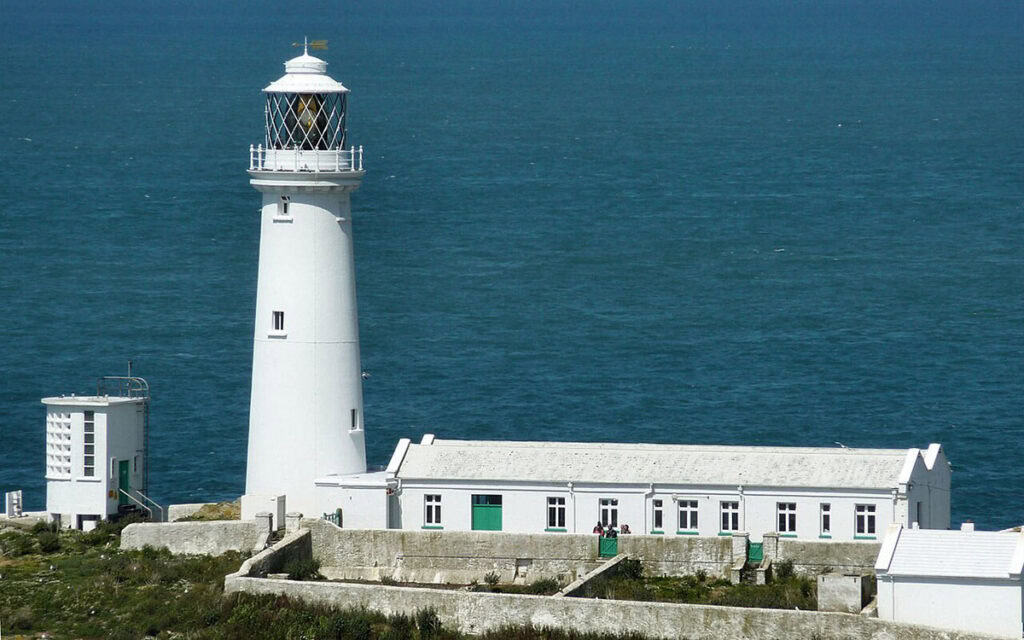
South Stack Lighthouse stands on a small island off the northwest coast of Anglesey in North Wales. It overlooks the Irish Sea and offers one of the region’s most outstanding natural views. Built-in the 19th century, the lighthouse guided ships safely around the rocky coastline, playing a vital role in Wales’s maritime history.
This site is notable for its historical importance and the stunning natural beauty around it. The cliffs near the lighthouse attract visitors eager to explore secluded beaches and observe wildlife. South Stack Lighthouse is a blend of Welsh coastal heritage and natural landscape, making it a famous landmark in West Wales.
Modern Wales Landmarks
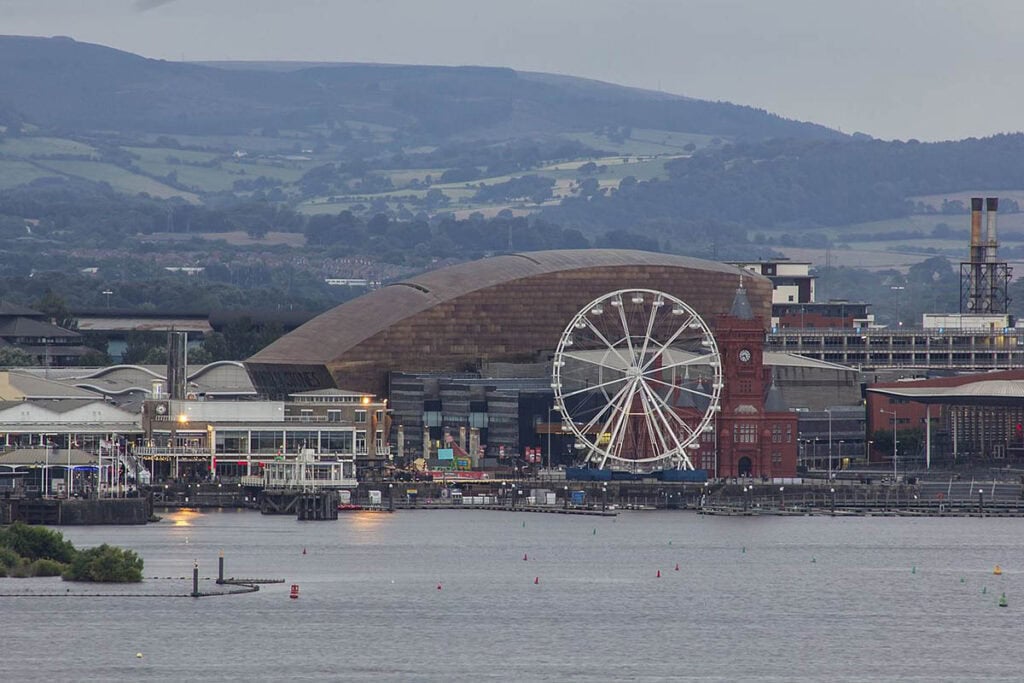
Modern landmarks in Wales blend history with culture and nature. These famous Welsh landmarks showcase Wales’s rich heritage. They offer unique experiences in cities and along the coast. Visitors can explore cultural hubs and discover natural wonders.
They can enjoy scenic views within a national park. All while immersing themselves in Welsh culture and history.
10. Cardiff Bay
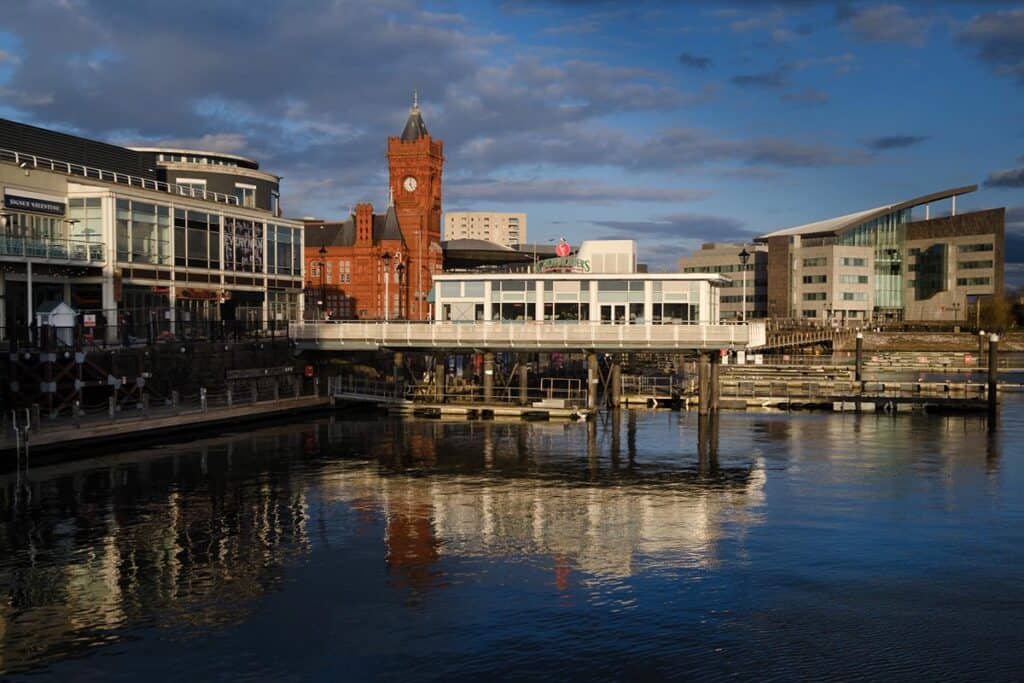
Cardiff Bay is a prime example of urban renewal in West Wales. Once a busy dockland, it is now a vibrant area of leisure, culture, and history. Cardiff Bay is home to the Wales Millennium Centre. This iconic arts venue hosts theatre, music, and the National Eisteddfod.
Visitors can explore the refurbished waterfront. It includes the Norwegian Church Arts Centre, restaurants, and shops.
The engine room of the bay’s transformation reflects the city’s industrial past. Cardiff Bay’s story mirrors the modern renewal seen in other famous Welsh landmarks in Welsh cities. The area offers a tour into Welsh history and contemporary life, showcasing the successful regeneration of former industrial sites.
Welsh Landmarks: A Recap
From medieval strongholds to places of outstanding natural beauty, Welsh landmarks capture the soul of a nation shaped by myth and history. Whether exploring sites tied to St David or reading about them in Wales’ largest-selling newspaper, these famous landmarks in Wales continue to inspire.
In the end, they reveal a landscape where timeless tradition and proud identity thrive together.









